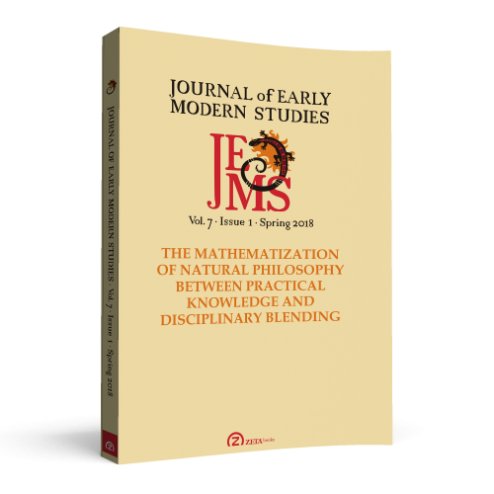The Weight of the Air: Santorio’s Thermometers and the Early History of Medical Quantification Reconsidered
The Weight of the Air: Santorio’s Thermometers and the Early History of Medical Quantification Reconsidered
Author(s): Fabrizio BigottiSubject(s): Philosophy, Early Modern Philosophy, Philosophy of Science
Published by: Zeta Books
Keywords: Santorio Santori (Sanctorius); thermometer; temperature; Galen; early modern medicine; University of Padua;
Summary/Abstract: The early history of thermometry is most commonly described as the result of a continuous development rather than the product of a single brilliant mind, and yet scholars have often credited the Italian physician Santorio Santori (1561–1636) with the invention of the first thermometer. There are good reasons for this. It was indeed Santorio who first applied a graded scale behind the thermoscope allowing it to measure the temperature of both the air and the body. To this end, he set the parameters of the instrument, by measuring the minimum and maximum temperature in terms of change in the water level, obtained by exposing the glass bulb to candle fire and snow. Experimentally, Santorio understood the need to take measurements within constant periods of time, which he did by means of his pendulum regulated devices, called pulsilogia. Finally, the invention of the thermometer follows Santorio’s programme of quantification of the physiological parameters of the human body which started approximately in the 1580s and is reflected in the invention of similar other devices (scales, pulsilogia, hygrometers). Although generally known in outline, this story lacks many and significant details. The purpose of using such instruments within the traditional context of Galenic medicine has not been investigated and scholars have consistently assumed that, being subject to the influence of atmospheric pressure and environmental heat, Santorio’s instruments provided unreliable measurements. The discovery that, as early as 1612, Santorio describes all vacuum-related phenomena as effects of the atmospheric pressure of the air, provides ample room for reconsidering his role in the development of precision instruments and the early history of thermometry in particular. By drawing on a variety of written and visual sources, some unpublished, in this article I argue that Santorio’s appreciation of phenomena related to weight of the air resulted in the construction of the first thermometers which worked as sealed devices. In the final part, I also consider Santorio’s use of the thermometer as related to seventeenth-century medical practice and his way to measure the temperature as based on a wide sample of individuals.
Journal: Journal of Early Modern Studies
- Issue Year: 7/2018
- Issue No: 1
- Page Range: 73-103
- Page Count: 31
- Language: English
- Content File-PDF

